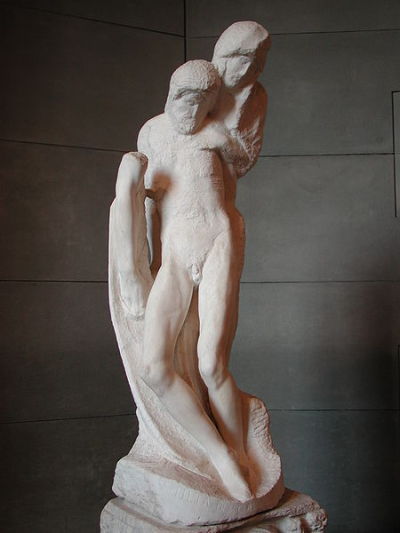
The Pietà Rondanini, begun in 1555 by Michelangelo Buonarotti (baptized 6 March, 1475; died 18 February, 1564), and on which the artist was working just before he died in 1564; now in the collection of the Museu d’arte antico, Castello Sforzesco, Milan
‘He was working on this mutilated fragment on 12 February 1564, six days before his death, as we learn from his follower Daniele de Volterra: “Michelangelo worked all Saturday … standing up, studying that torso of a Pietà.” The Rondanini Pietà, so-called from the Roman palace where it long stood, is a strangely curved, Gothicising work that has led commentators to try to define a late, medievalising tendency in Michelangelo’s art and thought. Certainly his attitude towards art had changed drastically — no longer was he the God-like creator of divine forms. But this final statue is the result of old-age debility, and although it is strangely moving, its interest is chiefly autobiographical. Unlike Michelangelo’s other unfinished works, this is hardly even a potential work of art. It is a record of an old man’s solitary need to express something more in stone, his beloved enemy. More and more isolated — in 1556 he wrote “all my friends are dead” — beleaguered at St. Peter’s, almost unable to write and draw, he was still obsessed with his original passion to create from stone. The Gothic, formless, anti-physicality of this wreck is unbearably pathetic.’
—from Michelangelo, by Howard Hibbard (1974)
via {varia}

0 comments:
Post a Comment